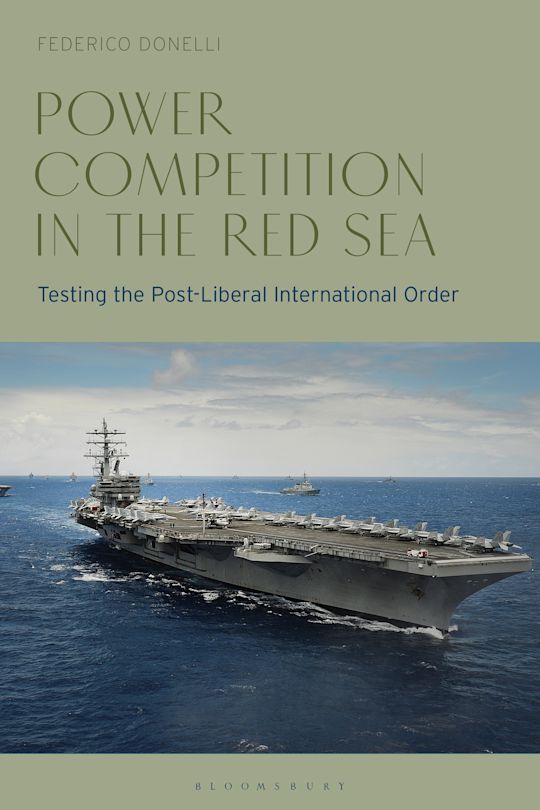
Introduction
In September 2025, the United States conducted a series of airstrikes against suspected drug traffickers operating off Venezuela’s coast, marking the first publicly known instance of U.S. airstrikes being used against traffickers at sea outside a traditional warzone. The strikes reflect a sharp escalation in counternarcotics operations. This article evaluates the context, strategic implications, and policy options surrounding the strikes, with a focus on their potential role in countering cocaine flows while recognizing their limited utility against fentanyl.
President Trump announced on Monday, September 15th that, on his Orders, “U.S. military forces had conducted a SECOND Kinetic Strike against positively identified, extraordinarily violent drug trafficking cartels and narcoterrorists in the SOUTHCOM area of responsibility. The Strike occurred while these confirmed narcoterrorists from Venezuela were in International Waters transporting illegal narcotics (A DEADLY WEAPON POISONING AMERICANS!) headed to the U.S”. In the same announcement, Trump claimed that “these extremely violent drug trafficking cartels POSE A THREAT to U.S. National Security, Foreign Policy, and vital U.S. interests”.
The September 15th strike resulted in the killing of three individuals aboard the ship.
U.S. military forces carried out an additional strike on Friday, September 19th. President Trump again claimed that, on his Orders, forces conducted a strike “against a designated terrorist organization engaged in narcotrafficking. Intelligence confirmed the vessel was trafficking illicit narcotics and was en route to poison Americans. The strike killed three male narcoterrorists”. It is not clear which group in the USSOUTHCOM area of responsibility was the target of the third airstrikes.
The first strike carried about by U.S. military forces on September 2, 2025, killed 11 suspected narcoterrorists. With the third strike, a total of 17 suspected drug traffickers have been killed.
History of U.S. Counternarcotics Policy
During the past 100 years, U.S. counternarcotic policy has seen different stages. Involvement in the nineteenth and early twentieth centuries was minimal.
1909-1923: During this time, the federal government became progressively more involved in criminalizing nonmedical narcotic use and worked to establish treatments and detoxification efforts.
1923-1965: Many describe this era as the “classic” era of narcotic control. During this era, “few avenues of treatment were open to addicts, and American narcotic policy was unprecedentedly strict and punitive, both in comparison with other Western countries and with what it has become in our own time”.
Then, during the 1960s, traditional law enforcement strategies were combined with new treatment strategies, including methadone maintenance.
1970s-1990s: The “War on Drugs” treated narcotics as a national emergency. As a result, President Nixon founded the Drug Enforcement Administration, a special police force designed to target illegal drug use and smuggling. Harsh drug sentencing continued into the 1990s, with the Clinton administration passing a $30 billion piece of legislation targeting drug related crime.
Post-9/11: Military resources were integrated into the counternarcotics mission under a counterterrorism lens, especially with U.S. military efforts in Afghanistan and the Plan Colombia against FARC.
2010s-2020s: With the rising opioid crisis, counternarcotic policy shifted to a more public-health focused approach and supply chain reduction efforts, though law enforcement remained a core component. Most policy focused on reducing the use, manufacture, and trafficking of illicit drugs.
The Current Landscape
According to recent reports, the September 2025 airstrikes represent a highly unusual escalation in U.S. counternarcotics practice. The strikes appear to be the first publicly acknowledged instance in recent U.S. history of lethal air operations against a suspected trafficking vessel in international waters outside a declared conflict zone.
Illegal narcotics destined for the United States primarily transits maritime routes from South America through the Pacific Ocean and Caribbean Sea, where the U.S. Coast Guard routinely intercepts shipments. Orion Policy Institute previously reported on Combatting Illicit Maritime Drug Flows to the United States and we are seeing this come to fruition. For example, in August 2025, the U.S. Coast Guard achieved a historic milestone, offloading 61,740 pounds of cocaine and 14,400 pounds of marijuana, totaling $473 million, making this the largest offload in Coast Guard History. According to reports by the Coast Guard, “this combined illegal narcotics offload prevented the maritime flow of approximately 23 million potential lethal does from reaching the United States”. But efforts do not stop here. The Coast Guard continues to increase their operations, aimed at seizing and disrupting these supply chains and reducing the amount cocaine, fentanyl, and other illicit drugs entering the U.S.
While cocaine, marijuana, and other illicit substances are often moved through maritime routes, fentanyl and its chemical precursors largely enter the U.S. through Mexico. As a result, the Department of Homeland Security is targeting the trafficking of fentanyl, as well as the chemicals and equipment used to make fentanyl that is largely coming from China.
Tren de Aragua (TdA)
Tren de Aragua (TdA), the target of President Trump’s September 15th airstrikes, is a “violent criminal organization founded between 2012 and 2013” in north-central Venezuela. The group originally gained notoriety as a prison gang inside a prison in Venezuela and operates in the U.S. mainly within Venezuelan migrant communities. According to the Drug Enforcement Administration, “TdA facilitates the smuggling of thousands of Venezuelan migrants into the United States… TdA members also conduct small-scale drug trafficking activities… and are suspected and/or charged with a variety of crimes including drug trafficking, murder, kidnapping, extortion, migrant smuggling, human trafficking, prostitution, organized retail crimes, robberies, and document fraud”. Tren De Aragua was labelled by the Biden administration as a transnational criminal organization and then by the Trump administration as a foreign terrorist organization.
The Path Forward
The September 2025 airstrikes targeting vessels linked to TdA offer some tactical benefits, including the immediate removal of drug shipments, temporary degradation of the organization’s maritime operations, and a signaling effect demonstrating U.S. willingness to act militarily in international waters to defeat the drug trafficking crisis. According to President Trump, the airstrike on September 15th disrupted a shipment of cocaine and fentanyl.
However, the strategic impact to these airstrikes is limited. Trafficking networks quickly adapt and will utilize alternate maritime, land, and air routes to replace lost shipments. In addition, while airstrikes serve an immediate impact, airstrikes on maritime routes do little to address the opioid crisis, as most of the fentanyl crossing into the U.S. is coming through Mexico.
U.S. policymakers face several options. Continuing this escalated method of airstrikes could provide rapid disruptions and deter further shipments via maritime routes, especially because President Trump has made his intent to eradicate drug trafficking clear. But the long-term impact of airstrikes may be limited. For airstrikes to remain successful, they must be combined with increased interruptions of trafficking through land and air routes as well. An integrated multilateral strategy that combines airstrikes with financial sanctions, disruption of air and land routes, continued seizure of large shipments of drugs, and continued targeting of the trafficking networks may prove a more permanent solution. This approach balances tactical disruption with other broader, more comprehensive approaches to combating this crisis.




